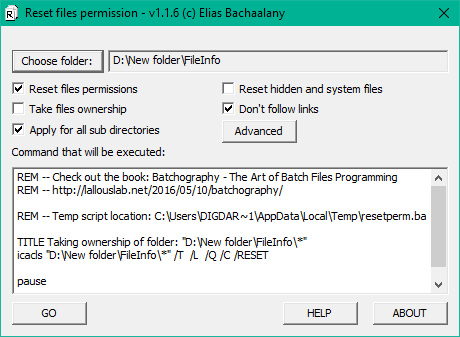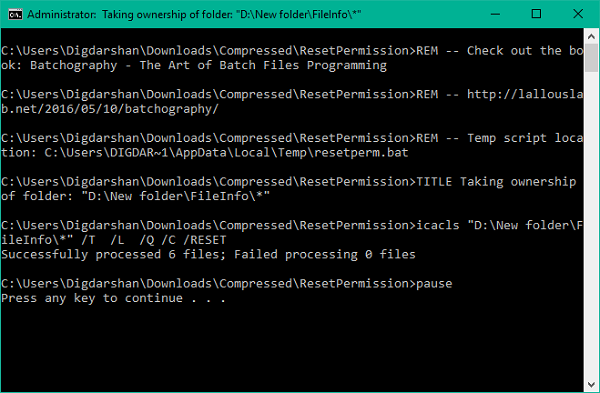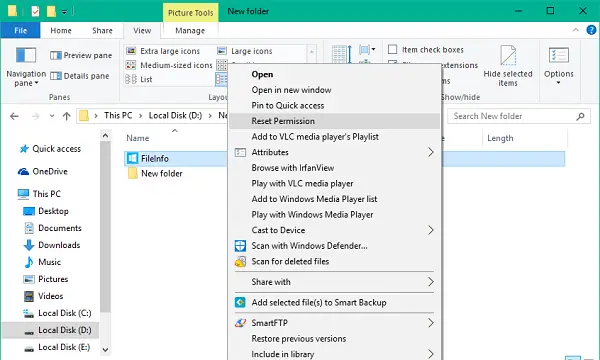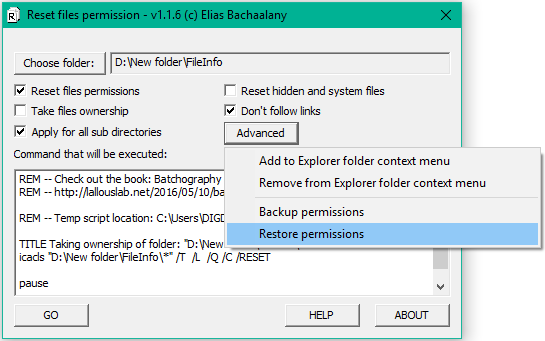In Windows OS, the files are maintained at different authorization levels and you need proper permissions before you can make changes to a file. You can’t just simply go and edit a file that is owned by some other user. You’d need to reset the file permission in order to take ownership and then edit it. Now, it can be really difficult if you’re not familiar with the commands that you need to run for resetting the file permissions. So, today we take a look at a graphical utility called Reset NTFS file permission, using which you can reset NTFS file permissions in Windows 10/8/7.
Reset NTFS file permission
Reset NTFS file permission is an ultra light-weight utility that can help you restore or reset file and security permissions and take ownership with just a click of the mouse. The user interface is extremely minimal with just a bunch of needed components and features that can be expected out of it. You need to run the program with Administrator privileges.
Once launched, click on Choose Folder to select the folder for which you want to reset the effective permissions and after configuring the available options, just click GO to execute the commands.
Here is a rundown of options and features that are available with this utility.
1] Reset file permissions: This is the fundamental operation of this utility. When you select any folder, this option is ticked by default. You can uncheck it if you wish to perform other operations.

2] Take file ownership: If you’re not an owner of a file/folder, trying to reset its permissions might result in an error. So you can select this operation to take ownership before resetting the permissions.

3] Apply for all sub-directories: You can select this operation if you want to reset the permissions recursively. Upon execution, permissions for all the files and folders inside the selected directory will also be reset.
4] Reset hidden and system files: Using this, you can make the hidden and system files visible and turn off their respective file attributes.
5] Add/Remove Folder context menu: You can add the option to reset permissions in the folder context menu so that work can be done with just a click.

6] Backup Permissions: You can choose to backup current permissions on a folder before making any changes to them. Select the folder you want to backup permissions for, click Advanced button and then select Backup permissions. Select the location to save the permissions as a text file. Your command will be prepared and displayed in the text area. Press GO to execute the commands and save the backup file.

7] Restore Permissions: You can easily restore the file permissions that you have backed up over the time and recover the integrity of your important files/folders.
This nifty little handy utility stuffs quite useful features in one package. If you’re up for it, you can download it from here.
NOTE: Do backup the file permissions or create a system restore point before making any changes to them. It’s advisable not to mess up with system files and folders as that can result in adverse system failure.